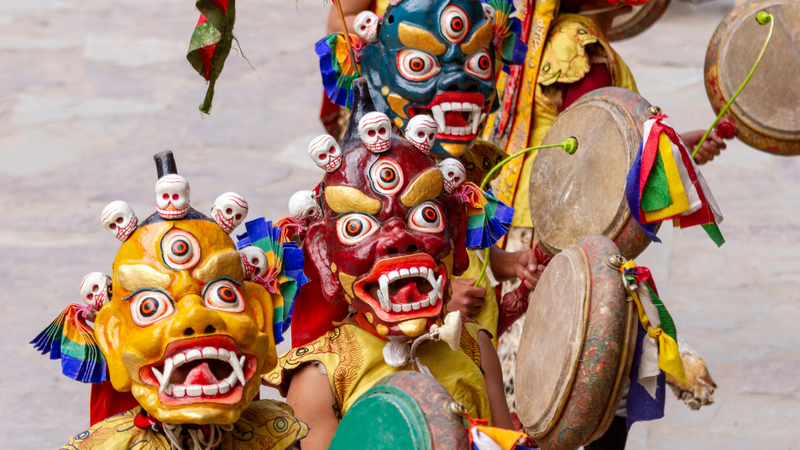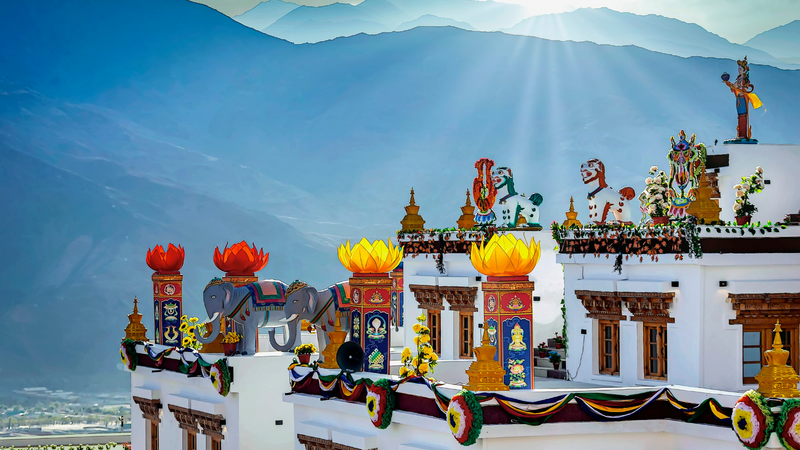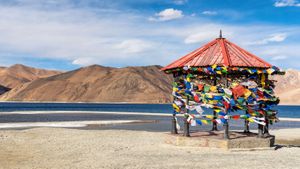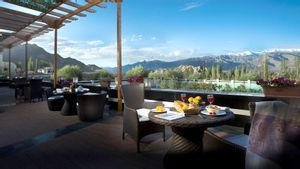Ladakh is known for its monasteries, long unwinding roads, picturesque lakes and adventure activities, and colourful festivals. One such festival is the Hemis Festival which typically occurs on the birthday of the local saviour Lord Padmasambhava. During the festival, there are dances, music, and prayers and performers usually wear expressive masks during the festivities. The most prominent part of the Hemis festival is the variety of colours that can be seen everywhere, which turns the sepia-tinted landscape of Ladakh into a vibrant one.
Significance of the festival

The Hemis Festival is celebrated in Ladakh on the 10th day of the Tibetan Lunar month. Based on Buddhist and Tibetan culture, the Hemis festival dates back to the 8th Century. Guru Rimpoche, also known as Lord Padmasambhava, is said to be the local god that warred demons and evil spirits. It is this spiritual leader that is known to have started Tantric Buddhism in the region, by combining the teachings of Tibetan culture with Buddhism. To commemorate this date of new beginnings, the people of Ladakh celebrate the Hemis festival. The festival is mainly celebrated by the Buddhist people in the region, primarily the Tibetan community.
During the two-day festival (that usually occurs in July), you can see Monks wearing colourful robes and scary masks while performing a local sacred dance with masks called ‘cham’. The cham dance represents a movement to signify the purity of the mind and the triumph of good over evil. These kinds of cultural and monastic festivals are a very significant part of Ladakh's cultural life.
When and where is it held?

The Hemis festival is held in the courtyard of the Hemis Monastery near Leh, Ladakh. It is important to note that the birth of Lord Padmasambhava differs from community to community as usually the celebration is marked with ‘month of Monkey’ which can be set at different times depending on the different followers of Tantric Buddhism.
How to get there
Because the Hemis Festival is celebrated in the warm summer months (providing a respite from the harsh winters of the region), it is relatively easier to travel to Leh at this time.
Take a flight from Delhi to Leh and witness the most jaw-dropping flight in India with a bird's eye view of the Himalayan snow-capped peaks. Leave for Ladakh by road from Srinagar to capture the amazing natural views of the mountainous landscape, and you can take a flight from any city to Srinagar to begin the trip. If you're a biking enthusiast, you can also take the scenic long-road route from Manali for a more immersive Himalayan experience.
Other cultural experiences when visiting Leh-Ladakh
1. Walk through Leh Market

If you fly to Leh, make sure to visit the market area in the town centre. The market area has many lanes that are filled with small shops selling a variety of products, such as shoes, clothes, jewellery, trekking gear, and carpets. A renowned stall in this area is the Tibetan Refugee Market. There, travellers can buy items such as prayer wheels, singing bowls, and thangka paintings. You can also visit the Central Asian Museum on Main Bazaar Road to learn about Leh's role in the Silk Road trade.
2. Explore Leh Palace
Leh Palace is the most noticeable attraction in the city. It is one of the most historically rich structures in the country. The 17th-century palace was built by King Sengge Namgyal in a Tibetan style of architecture and it served as his royal residence until the 19th century. By paying Rs 300, you can enter and wander around the ruins on the palace grounds. You can visit Leh Palace Museum, which displays royal utensils, ceremonial dresses, jewellery, ornaments, and crowns.
3. Visit other monasteries
Ladakh is home to numerous Buddhist monasteries since almost half the population there practises Tibetan Buddhism. When visiting Ladakh, visiting one of the monasteries is a must. Spituk Monastery is the closest monastery to Leh, located 18 km away from the city. The monastery houses 100 monks and features amazing views of the Indus Valley below it and a giant statue of Kali. Other monasteries to be visited are Basgo Monastery near Alchi and Diskit Monastery in the Nubra Valley.
4. Pangong Lake

The sparkling blue Pangong Lake is 12 km long and extends from India to Tibet. This picturesque lake has been the filming site for many Bollywood movies, the most famous being the 2009 hit movie 3 Idiots. Pangong Lake is known for its serenity and tranquillity. Visitors go there to admire the beauty of its impeccable blue waters. During the migration season, you might also get a glimpse of ducks and gulls on the lake.




